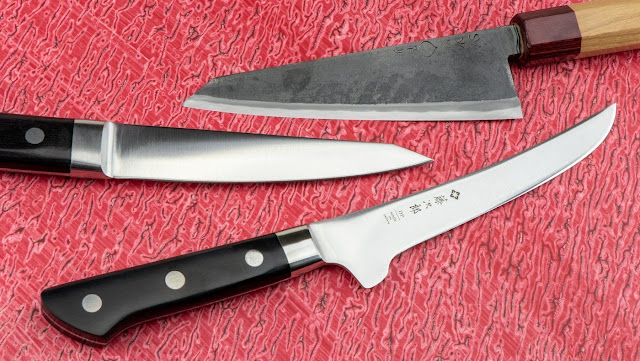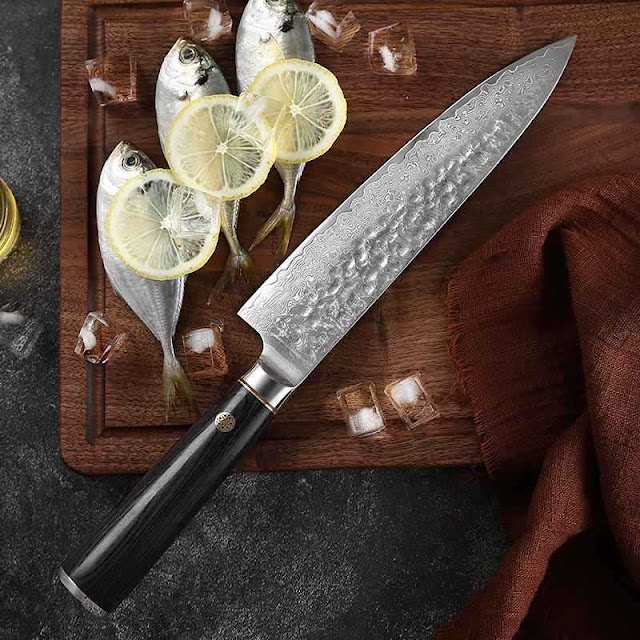Unsheathing Precision: The Boning Knife Unveiled
In the world of culinary craftsmanship, where precision and finesse reign supreme, the boning knife emerges as a silent hero. Often overshadowed by its larger counterparts, this slender blade possesses a singular purpose: to delicately separate flesh from bone with unparalleled accuracy. Join us as we delve into the realm of the boning knife, exploring its unique attributes, versatile applications, and why it stands as an indispensable tool in the arsenal of any discerning chef.
Anatomy of a Boning Knife:
The boning knife is characterized by its slim, tapered blade, designed to navigate the intricate contours of meat, poultry, and fish with ease. Key features include:
Flexible Blade: Unlike rigid knives, the boning knife boasts a flexible blade that effortlessly conforms to the shape of bones and joints, facilitating precise cuts and minimizing wastage.
Sharp Point: The sharp, pointed tip enables chefs to maneuver around bones and remove cartilage with surgical precision, ensuring clean cuts and maximizing yield.
Ergonomic Handle: To enhance control and maneuverability, boning knives often feature ergonomic handles crafted from materials such as wood, plastic, or stainless steel.
Versatile Applications in the Kitchen:
While its name suggests a singular purpose, the boning knife proves to be a versatile ally in a myriad of culinary tasks. Here are just a few ways it can elevate your culinary creations:
Deboning: Whether it's filleting a fish, trimming poultry, or removing bones from meat, the boning knife excels at delicately separating flesh from bone with surgical precision.
Trimming: Its slender profile makes the boning knife ideal for trimming excess fat and sinew from cuts of meat, ensuring each bite is succulent and flavorful.
Precision Work: From crafting intricate cuts for presentation to scoring meat for optimal marination, the boning knife's sharp edge and nimble agility make it indispensable for precision work in the kitchen.
Selecting the Perfect Boning Knife:
When choosing a boning knife to add to your culinary arsenal, consider the following factors to ensure it meets your needs:
Blade Flexibility: Opt for a boning knife with a degree of flexibility that suits your preferred style of cooking and the types of meats you frequently work with.
Blade Length: Select a blade length that balances maneuverability with sufficient reach to tackle larger cuts of meat effectively.
Handle Comfort: Choose a boning knife with an ergonomic handle that feels comfortable and secure in your hand, reducing fatigue during extended use.
Caring for Your Boning Knife:
To prolong the lifespan and performance of your boning knife, follow these essential care tips:
Hand Washing: Always hand wash your boning knife with mild soap and warm water, avoiding harsh detergents and abrasive scrubbers that can damage the blade.
Drying and Storage: Thoroughly dry your knife after washing to prevent rust and corrosion, and store it in a knife block or sheath to protect the blade and ensure safety.
Sharpening and Honing: Regularly sharpen and hone your boning knife to maintain its razor-sharp edge, ensuring effortless cutting and precision performance.
Conclusion:
In the culinary arena, where every cut and slice is a testament to skill and craftsmanship, the boning knife emerges as a silent yet indispensable ally. With its slender profile, precision blade, and versatile applications, this culinary tool empowers chefs to elevate their creations to new heights of excellence. So, equip yourself with the precision of a boning knife and embark on a culinary journey where every cut is a masterpiece in the making.




Comments
Post a Comment